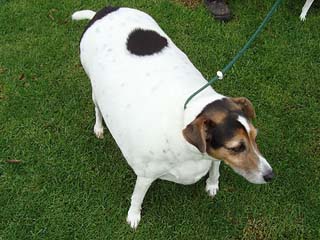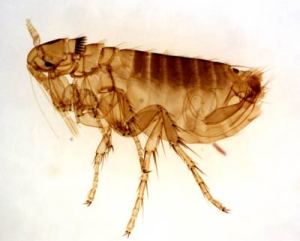I’m not fat! I’m just big boned, pleasantly plump, or maybe a little fluffy!
Call it what you want, but your pet being overweight is a BIG problem.
Obesity is a raging problem in our pet population. Its effects are difficult to measure because it contributes to the development of so many painful and life-shortening diseases.
Is Your Pet Overweight?
How do you tell?
Your pet should have a waist when viewed from above and the side. Additionally, you should be able to easily feel the ribs, but not see them. Still unsure, stop by and we will help you evaluate your pet’s weight.
Why is your pet overweight?
It is often a combination of many factors including eating an excess of their own dog food, stealing food from other pets in the household, access to table scraps, too many treats, and inactivity.
If your pet is overweight, the kindest gesture you can provide as a loving pet owner is to help them lose weight. This will take excess weight off of their stressed joints, helping to prevent ligament damage that often requires surgery. You pet will also experience decreased fatigue and pain from arthritic joints-allowing your them to become more active furthering the weight loss. Being overweight can also contribute to other diseases including diabetes and liver disease-especially in cats.
We often view feeding our pets and giving them treats as a sign of affection, but in excess, we will shorten their lifespan and promote the development of unnecessary diseases.
To help your pet lose weight, you must be committed to the goal. Begin by weighing your pet and taking a “before” picture. We love to help our patients lose weight so please stop by anytime and use our scale in the lobby-no appointment necessary.
Dogs and cats can safely lose 1-2% of their body weight each week. We can help you develop an individualized weight loss plan for your pet.
Look at your pet’s food bag. It will give you specific feeding quantities based on weight. Feed the amount of food for your goal weight, not the current weight. It is very important to MEASURE the amount of food given to your pet daily. In general, pets are not good at self-regulating, so it is important we do that for them.
There are also prescription weight loss foods that help ensure your pet receives adequate nutrition while reducing calories. Most dog treats are very high in calories and can add up quickly. Choose treats that are low in calories and limit your pet to 1 or 2 treats a day. Good treat options include baby carrots and ice cubes.
We just received a shipment of a great new treats called Meaty d’Lites – each treat has just 10 calories and are a great option for all dogs. There is currently a special that allows to you try a bag for FREE!
Table scraps must be eliminated. Scraps are not only high in calories and fat, but also are simply not good for your pet. Small amounts of human food have a HUGE impact on your pet’s weight.
Increase your pet’s activity level. Start with a 15 minute walk twice a day and slowly increase the time/distance your pet exercises each week. This is a great bonding experience for you and your pet.
Swimming is a super exercise for dogs that enjoy water. Fall is a great time of year to get outside and moving. Winter will soon be here, making activity outdoors a challenge-let’s get started now!
Cats can exercise too. Laser lights and toys are great ways to get your cat up and moving. Some cats can be trained to walk on a leash and really enjoy the time outdoors.
These pet weight loss tips provide a great start for getting you and your pet started on the right track. If you have specific questions concerning your pet’s weight, please contact us.
Until next time-enjoy your four-legged family members! Spoil them with love, your time, and good health-not treats.


